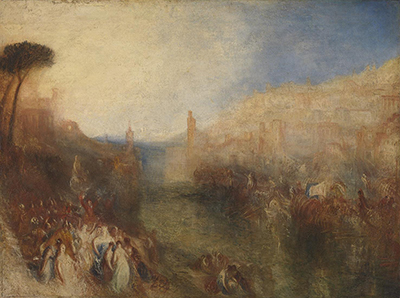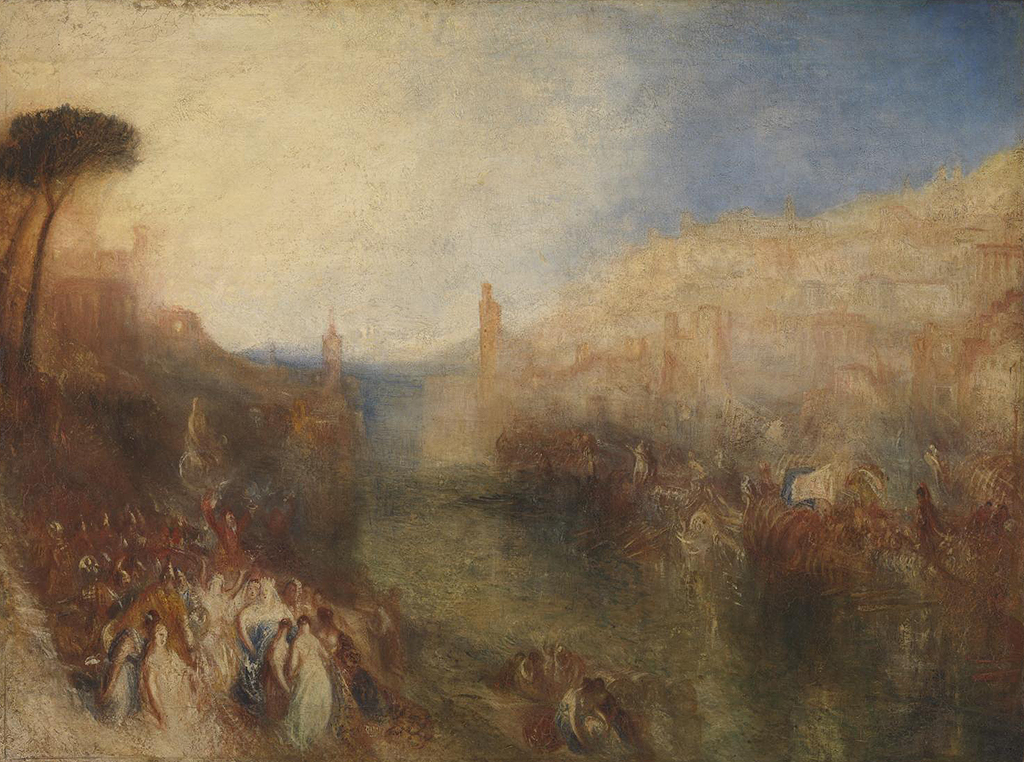This painting was completed in 1850 and immediately put on display at the Royal Academy. It is one of the artist's last works, as he passed away the following year.
We find a great amount of content displayed here, with the main river cutting through the centre of the scene, leading to a couple of tall gates, marking the boundaries of the sea. To the left we find a huge collection of figures making their way down the hill which sweeps down the left hand side of the painting. A group of trees are placed to add vertical interest and to frame that side of the composition. The busiest part of the painting is across on the other side of the river, where a compact city can be seen, with endless series of houses and other buildings tightly crampt together. Below them are a collection of vessels, in all manner of different shapes and sizes, who are clearly preparing for their own departure.
The title of the piece helps us to determine certain things found here. The most significant is that the figure on the left, predominantly women, are likely to have arrived in order to wave off their sons and husbands. This was normal practice in past centuries, where journeys were dangerous and also could last a long time. In a way, we find here a joyous moment of excitement, where the sailors are heading off to unchartered waters, possibly in search of great wealth and glory that would then be spread amongst their own families.
Turner would work on a number of paintings at the same time and eventually exhibited four together at the Royal Academy in 1850. He continually jumped from one to the next, to the next, and back again. He felt this kept each one fresh and interesting in his mind, rather than revisiting one piece for many days on end. Incredibly, he actually continued to tweak elements even after they had been hung out for display, such was his desire for precision and perfection which is never truly possible within art. As one of his last pieces, Departure of the Fleet retains a particular importance within his overall career.





